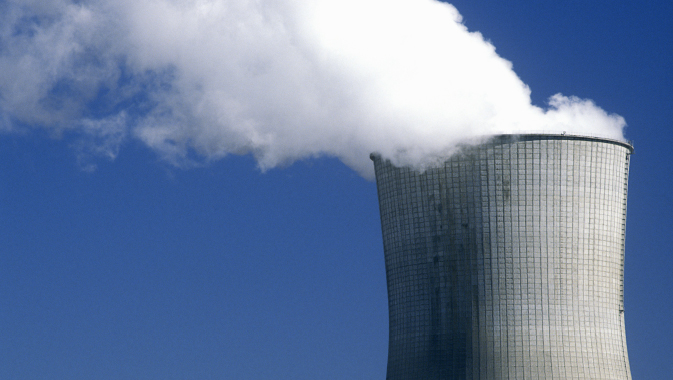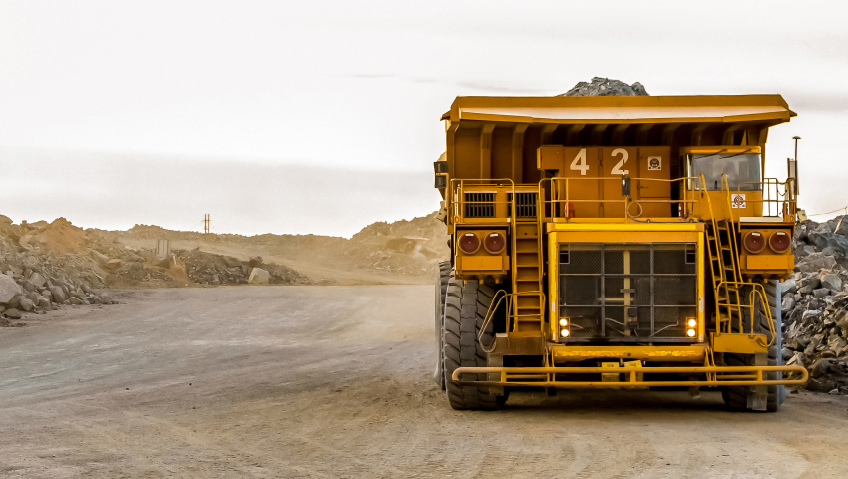Nuclear power. Say those words and you can conjure up all sorts of images in people, from a lethal mushroom cloud to the power source of the future.
The history of nuclear power is well known and, frankly, a lot of it isn’t pretty. But while people can be quick to jump to seeing its ominous power as a weapon, there have been all manner of benefits that are the result of nuclear science – not only power for our communities, but the ability to help treat different forms of cancer.
The perception of nuclear power has a lot of myths connected to it, but how much do we really know about what goes into it? The best place to start a discussion about nuclear power may be a crash course in how it works.
There are currently 96 commercial reactors in the United States, according to the Office of Nuclear Energy. The amount of power produced by these in a year depends on the size of the plant and how many hours it runs.
To provide an example, let’s take the R.E. Gina Nuclear Power Plant located in New York. This is actually the smallest plant operation in the country right now and it produces just under 14,000 megawatts worth of power in 24 hours. This translates to about 14 gigawatts worth of energy.
For scale, one gigawatt of power is approximately enough energy to light up 100 million LED bulbs. In fact, these nuclear reactors are producing 20 percent of the country’s current electricity, and nuclear power has played a role in providing power to the U.S. for 60 years.
So how does nuclear power work? In a nutshell, it is a chain reaction that produces a very large amount of heat. The term for this process is called fission, where a larger atom is split into two or more smaller atoms. This is achieved by literally slamming a neutron into a larger atom to break it up and cause a chain reaction.
The process releases a vast amount of energy. Elements like uranium and plutonium are used to control this process because they tend to be fairly stable.
Once the heat is released from this reaction, it is converted to steam which turns a turbine to create electricity. This part of the process is similar to a number of other power generating processes. The big advantage of nuclear power over other forms of energy is that that while it is complicated, it does not release carbon into the atmosphere so it is actually one of the cleaner ways to keep the lights on.
That’s the basic explanation of nuclear power and there are myriad other engineering components that go into making reactors work. Some people might also say that this was the Pollyanna version of nuclear energy and that there are potentially dangerous and damaging impacts from using nuclear power.
Names like Three Mile Island, Chernobyl and Fukushima represent those nightmare scenarios of meltdowns at nuclear reactors. A meltdown is literally when the core of a nuclear reactor melts. In the case of Fukushima in 2011, the cooling systems failed because of damage from a massive tsunami and the fuel rod component of the reactor became exposed to the air and rapidly heated up, cracked and released radioactive gasses.
This is the greatest fear about the nuclear industry – and it should be. The potential damage from a meltdown scenario can be catastrophic. And this is precisely why nuclear power plants have a number of safety systems to minimize the risk.
These systems include multiple barriers such as canned fuel, pressure valves and containment to protect from the release of gasses. Other safety systems include redundancies whereby there are multiple points that will shut down the reactor as well as constant monitoring of the machinery and systems the make the nuclear process work.
Put another way, Three Mile Island, Chernobyl and Fukushima are the only major incidents that have occurred in what is 17,000 cumulative reactor years of generating power in 33 countries around the world.
But even if nuclear reactors are working well, they also produce waste. Throughout the stages of generating power, quantities of radioactive materials are produced. The high-level nuclear waste is especially concerning as it remains radioactive for tens of thousands of years. The safe containment of these materials has been the source of debate throughout the history of the nuclear power industry.
“Vertical boreholes up to 5,000 meters deep have been proposed, and this option is said by some scientists to be promising,” The Guardian reports. “But there have been doubts, because it is likely to be nearly impossible to retrieve waste from vertical boreholes.”
Another solution on the table is a new generation of power plants that would actually run on depleted uranium. Bill Gates famously founded TerraPower back in 2011. The concept is called a traveling-wave reactor which, according to Popular Mechanics, “… is appealing on several levels – not only would its small design lower the currently rising price of nuclear energy, it would actually consume the trash pumped out by today’s modern reactors.”
Gates has made his pro-nuclear stance clear: “Nuclear is ideal for dealing with climate change because it is the only carbon-free, scalable energy source that’s available 24 hours a day,” he said in a public letter released at the end of 2019. Human ingenuity is what’s required next. “Problems with today’s reactors such as the risk of accidents, can be solved through innovation,” he said.
It’s also worth mentioning that the total amount of waste produced by nuclear plants is not nearly as much as you might expect. Since the 1950s, the U.S. has produced about 83,000 metric tons of used fuel. And yes, that sounds like a lot, but that amount can also fit into a single football field that is buried to a depth under 10 yards. And while there are challenges that come with this nuclear energy, its enormous potential to meet our energy needs without polluting our environment with carbons makes it so appealing to many countries.
About 63 percent of America’s energy comes from fossil fuels like coal, natural gas, petroleum and other gases. This pumps 1,619 million metric tons of carbon dioxide into the atmosphere, which is roughly 32 percent of total energy-related CO2 emissions. Scientists report that carbon dioxide levels are at a record high, contributing globally to respiratory disease from smog and air pollution and creating extreme weather, causing food supply disruptions, and damaging wildlife habitat. Clean, green power is the key we need to unlock a sustainable future.
Remember how that plant in New York produces 14 gigawatts of power in 24 hours?
It would take 3.125 million solar panels or 431 utility scale wind turbines to produce a gigawatt of power. And as Bill Gates says, nuclear power provides a reliable energy source that is available 24 hours a day. So when nuclear is used in conjunction with wind and solar power sources, we can create new energy grids that produce power while leaving next to no carbon footprint.
Plus, the advancements being made to how power plants are designed are opening up even more efficient energy production potential. According to Scientific American, “The world demand for energy is projected to rise by about 50 percent by 2030 and to nearly double by 2050.”
To meet this growing demand, the Generation IV project is a nine country coalition that is collaborating to develop reactors that include modular reactor processes, gas-cooled reactors and next generation fast-spectrum reactors.
Small modular reactors are particularly promising because of their size. They fit into an average-sized gymnasium, and have the additional benefits of being able to provide power to remote communities as well as uses for water desalination. These reactors are also considered to be safer thanks to their compact size compared to full-sized plants. In Canada, three provinces have pledged to work together to develop these reactors to help reduce greenhouse gas emissions 30 percent below 2005 levels.
Ontario, Canada’s most populous province, shut its coal plants in 2014. Since then the province has experienced only one smog day. In contrast, in 2005 alone, residents of the Greater Toronto Area suffered through 53 smog days while coal, with its toxic emissions, provided 19 percent of Ontario’s power.
While no form of energy production is perfect, nuclear power does offer a lot of potential – especially as we continue to improve the design and manage the risks and waste produced. The biggest barrier to its advancement may be public perception of the myths around it. There has been a 30-year period where virtually no reactors have been built in the U.S. But, after 2020, two new reactors are expected to come online.
Meeting the power demands of the future while trying to reduce our carbon emissions is a tough challenge, and it will only become increasingly difficult to not seriously consider nuclear power as a main source of power generation going forward.













